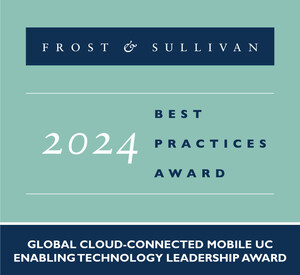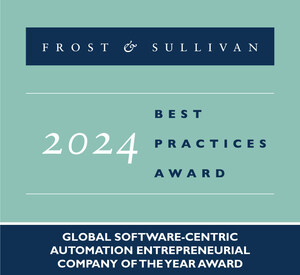Mega Trends in Connectivity and Surveillance Enable Global Migration to Next-generation Space Technologies by 2030
Connectivity and advanced high-frequency services create growth opportunities in the future of space
SANTA CLARA, California, Jan. 30, 2018 /PRNewswire/ -- Frost & Sullivan's latest analysis on the Mega Trends enabling space technologies finds that by 2030, over 13,000 satellites will be launched, more than 60 new players will enter the upstream market, and over 130 players will be active in the downstream market. Frost & Sullivan expects advancements in innovation, less expensive hardware, and small form factor sensors and payloads will propel growth in the next-generation space market, generating novel business models and unique revenue streams.
Frost & Sullivan's recent market research The Future of Space, 2030 and Beyond, sheds light on Mega Trends in connectivity and surveillance and what the space industry will look like by 2030. Key disruptions, innovations and trends within satellite manufacturing, launch services, satellite operations, downstream services, and deep space mission domains are also discussed.
For further information on this analysis, please visit: http://frost.ly/25r
"With over 8,500 small satellites due for launch by 2030, it is clear that space traffic management services will be an essential utility by 2020, with integrator platforms delivering insights via web-based services," said Arun Kumar Sampathkumar, Aerospace Team Leader at Frost & Sullivan. "With potentially 80 billion connected devices brought together by over 30 operations launching more than 980 satellite missions, the space value chain is set to experience significant change with new entrants, innovative business models, and varied market positions dynamically disrupting the status quo."
Further evolutions impacting the future of space include:
- New products and services using small satellites;
- New launch services market utilizing spaceport-based business models;
- Enhanced Internet of Things applications;
- Increased government participation;
- More internet users from remote locations;
- Industry consolidation among space corporations; and
- Increased autonomy in automotive products.
The Internet of Things (IoT) trends are evolving fast and the current focus is primarily on sensing and transmission. Consequently, once the sensors are in place and the transmission capabilities are live, the need for integration, processing and distribution of insights will rise and the demand for new connectivity services and the subsequent disruptions will be very interesting to adopt.
"The space industry will play a key role by providing seamless connectivity and remote sensing capabilities which will be a critical ingredient in the realization of smaller IoT systems which over time will evolve into an Internet of Everything (IoE) trend, bringing together technologies that otherwise were never considered worthy of integration in the past. The impact of space industry in the IoE domain will be first realized in the commercial world and the military world will quickly adapt the same, enabling more commercial opportunities in the military markets," observed Sampathkumar.
The Future of Space, 2030 and Beyond is part of Frost & Sullivan's global Aerospace Growth Partnership Service program.
About Frost & Sullivan
Frost & Sullivan, the Growth Partnership Company, works in collaboration with clients to leverage visionary innovation that addresses the global challenges and related growth opportunities that will make or break today's market participants. For more than 50 years, we have been developing growth strategies for the global 1000, emerging businesses, the public sector and the investment community. Contact us: Start the discussion
The Future of Space, 2030 and Beyond
MC88-22
Contact:
Mariana Fernandez
Corporate Communications – North America
P: +1 (210) 348 1012
E: Mariana.Fernandez@frost.com
http://ww2.frost.com
Twitter: @Frost_Sullivan
LinkedIn: Frost & Sullivan


Share this article